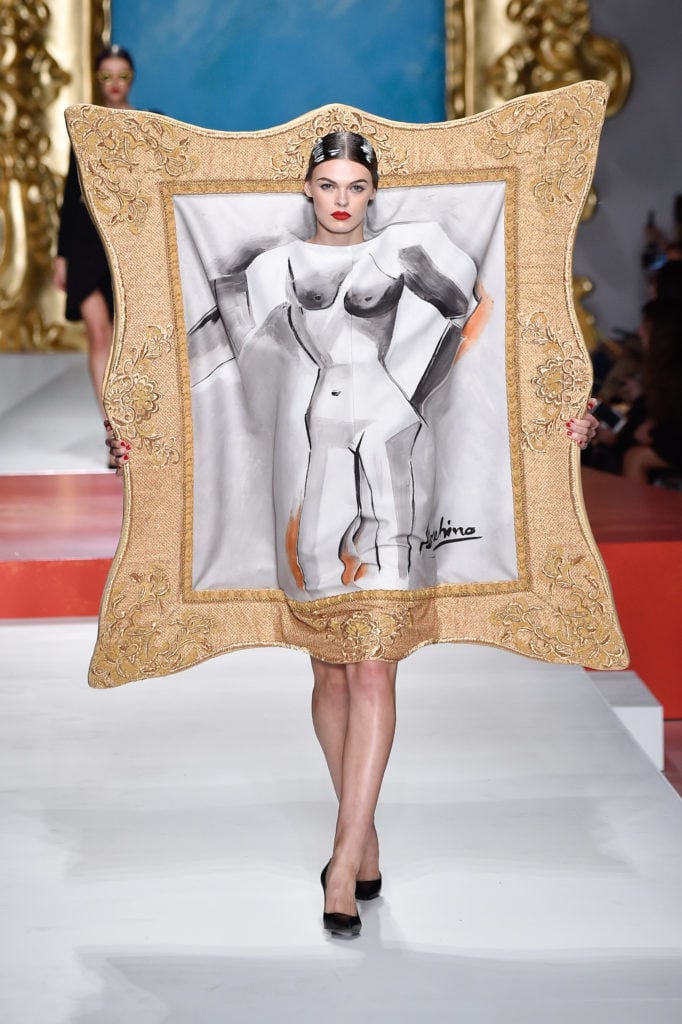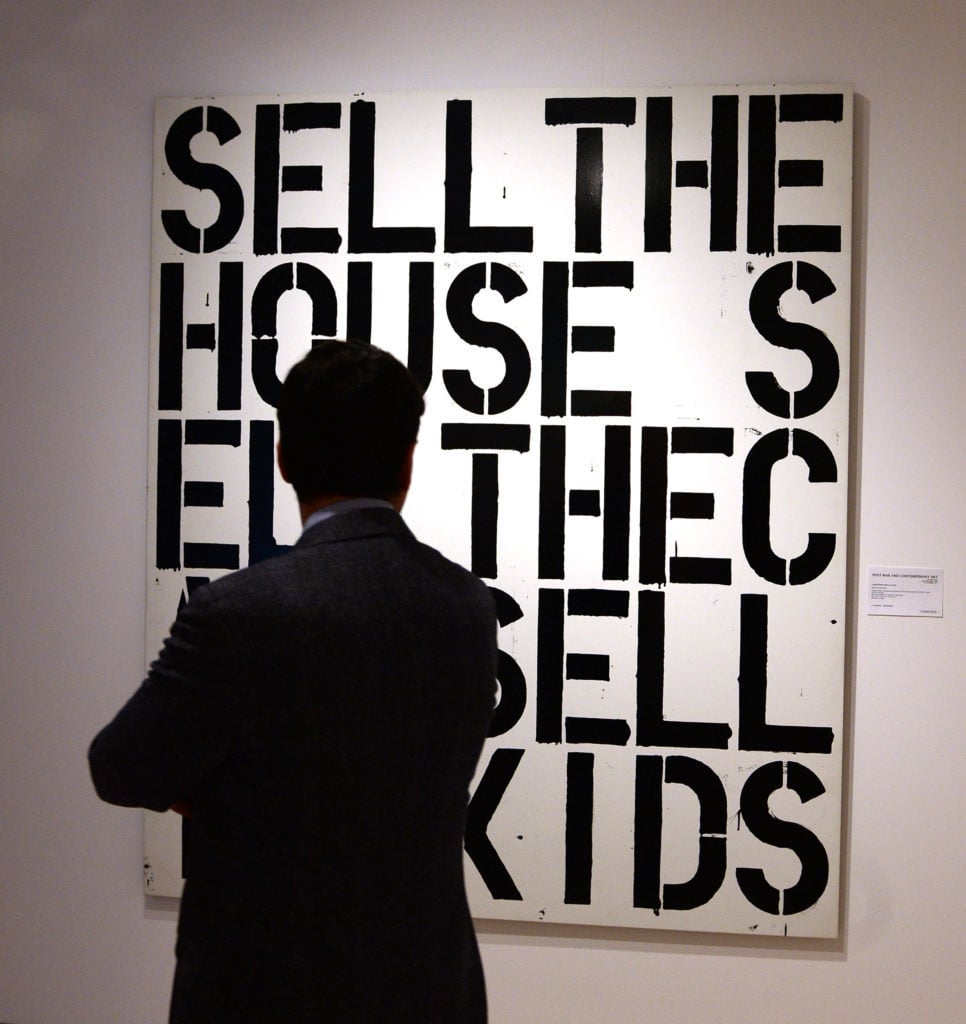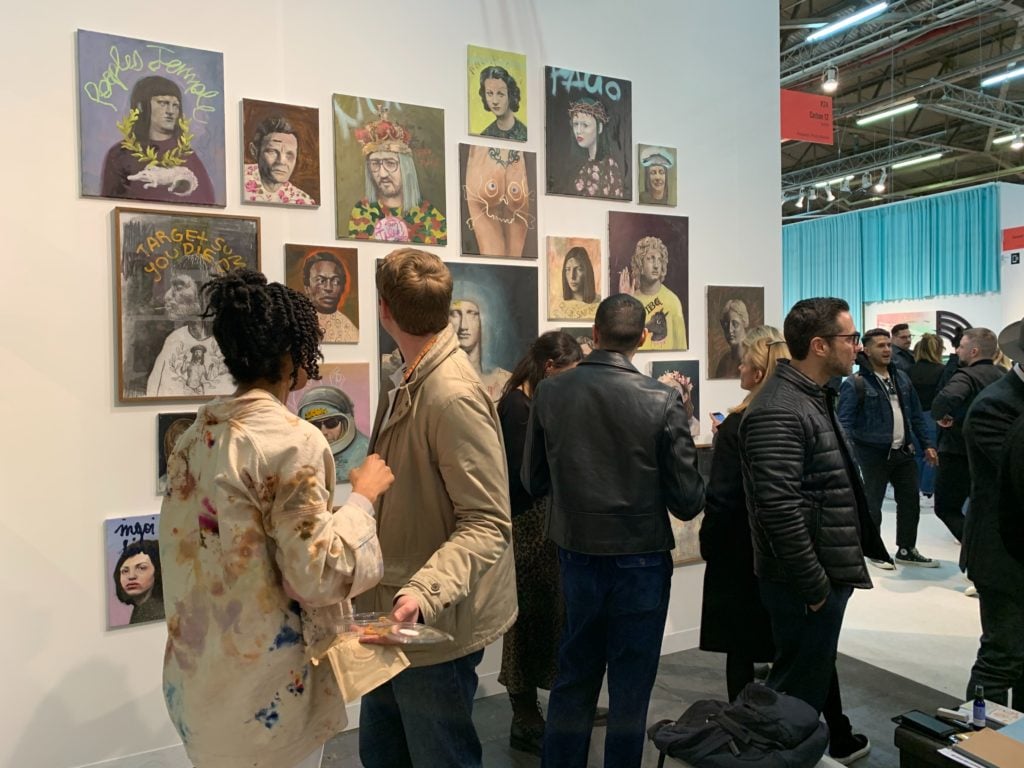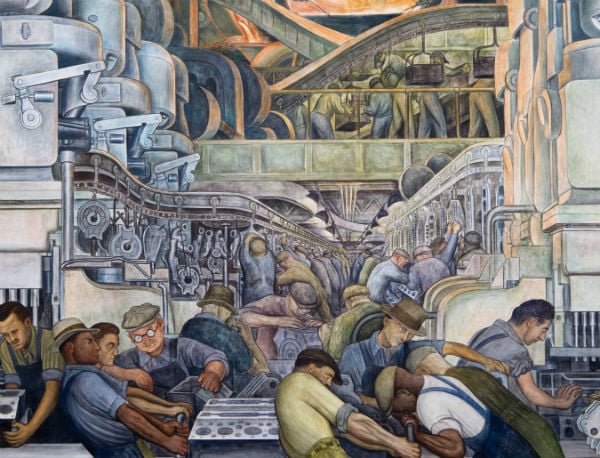Opinion
The Gray Market: Why the Coronavirus Proves the Art and Fashion Economies Are Different Animals (and Other Insights)
Our columnist tries to reconcile how two markets that are often compared have performed quite differently so far this year.

Our columnist tries to reconcile how two markets that are often compared have performed quite differently so far this year.

Tim Schneider

Every Monday morning, Artnet News brings you The Gray Market. The column decodes important stories from the previous week—and offers unparalleled insight into the inner workings of the art industry in the process.
This week, asking about the limits of a favorite art-market comparison…
On Thursday, Business of Fashion relayed that the Savigny Luxury Index, which collectively tracks the share prices of nearly 20 top luxury companies, “went into meltdown” in February due to fallout from (you guessed it) the novel 2019 coronavirus. And since there has been a tremendous amount of talk in recent years about the parallels between the fashion and art markets, the recent freefall in the former should reveal something useful about how similar the two businesses really are.
So what does a “meltdown” of the Savigny Luxury Index mean in measurable terms? As a unit, the share prices of its 17 constituent companies dropped 7.1 percent in February. Three labels—Burberry, Prada, and Tod’s—tumbled 15 percent or more. Perhaps even more surprising, not a single retailer in the index saw an uptick on Wall Street last month, marking the first case of across-the-board decline in more than eight years.
Since share prices and percentages tend to feel a little abstract, let’s cast this situation in more concrete figures. According to a separate Business of Fashion piece on February 24, a joint study by Italian luxury-brand committee Altagamma, research firm Bernstein, and Boston Consulting Group projected that the global luxury sector could hemorrhage between about $34 billion and $45 billion in sales in 2020 due to the effects of COVID-19. A wound of that severity would mean the luxury market only reaches about $335 billion this year, translating to an industry-wide loss of between about seven and 10 percent year over year.
For reference, a luxury-market hit of $34 billion to $45 billion would equate (in dollar terms) to somewhere between about half and two-thirds the size of the entire art market in 2019, if you buy the $64.1 billion in sales touted in the latest Art Basel and UBS report. Which naturally begs the question: How worried should art sellers, middlemen, and art-services businesses be?

Christopher Wool’s Apocalypse Now at Christie’s. (Photo by Rune Hellestad/Corbis via Getty Images)
The case for short- to medium-term pessimism about art sales this year seems obvious. Like luxury goods, artworks are discretionary purchases. In strict utilitarian terms, no one needs them. (Think about the value of a Warhol in a post-apocalyptic landscape where unwashed brigands are robbing people at gunpoint for clean water.) This means sales usually drop off when consumer confidence wavers. It’s a consequence of the phenomenon known as the wealth effect: people tend to spend more money when they’re making more money, and spend less when they’re making less.
When it comes to art buyers (see: the wealthy), how much money they’re generating at any given time primarily has to do with the performance of their investment portfolios. And in case you haven’t been eyeing Wall Street over the past couple weeks, it’s getting thrashed about as badly as a Daytona Beach hotel room by a mob of spring breakers. Upon close of trading on March 6, the S&P 500 was down 12 percent since February 19. That’s the sharpest downturn since 2011, according to the New York Times, and enough to incinerate $3 trillion in wealth worldwide.
In light of all that, as well as last month’s synchronized swan dive by fashion companies in the Savigny Luxury Index, why wouldn’t the art market have to absorb a similar body blow?
Well, it’s worth noting that the buyers haven’t fled from major art-market events in droves so far. Even as the luxury market was plunging, sales results at Frieze Los Angeles, Felix, and the ADAA Art Show in February were robust. VIP day at last week’s Armory Show reportedly welcomed in a flotilla of six- and seven-figure sales, while collectors gobbled up the (largely) lower-priced works at Independent. And although attendance faded by 27 percent on TEFAF Maastricht’s preview day (from 5,500 visitors in 2019 to 4,000, with US museum reps most conspicuously absent), dealers still confirmed a slew of transactions south of $5 million.
Business has been brisk outside the fair ecosystem, too. Between February 18 and February 28, Pagavella (the collaborative troika of Pace, Gagosian, and Acquavella) sold about $300 million of work from the $450 million Donald Marron collection (as first reported by Katya Kazakina at Bloomberg). In the auction sector, Phillips’s New Now sale in New York last week bested the 2019 edition’s total by 52 percent, bringing in a premium-inclusive $7.9 million.
So how exactly are we supposed to reconcile these conflicting data points?

Visitors admire Austrian artist Philip Mueller’s portraits at the Armory Show booth of Dubai’s Carbon 12 gallery. Photo by Andrew Goldstein.
There are two obvious counters to the narrative of continued art-market success in February and early March. First, no matter how hard my colleagues and I try, art-fair sales reports are never completely trustworthy. Even if all the transactions we hear about actually go through, we’re only ever able to capture a fraction of the (usually) hundreds of sellers’ experiences at any event. Case in point: I’ve gotten the sense that sales beyond the preview day at the Armory Show have not been as robust as in years past for many sellers, but it’s possible I’m just getting a non-representative sample of tea leaves to read.
The second obvious point is that the real challenge for the art market is just beginning. All the meaningful trade events in January, February, and early March went ahead as planned. But the now-cancelled Art Basel Hong Kong would have opened roughly a week after this column’s publication, and several more market events set to debut in late March or April have either been postponed, relocated, or shut down over public-health concerns. In other words, the void yawns open now.
On the other hand, there are significant structural discrepancies between the art and luxury markets that should make the two industries perform at least somewhat differently in the COVID-19 crisis.
First, even the most revered luxury retailers still operate as mass-market merchants. Although the runway pieces suck up most of the attention, a huge part of any major fashion house’s annual revenue comes from selling accessories normally priced between $100 and $800, along with not-much-more-expensive basics including denim and t-shirts. I’m not saying those items are cheap in an absolute sense. But they are much cheaper than the artworks that drive the gallery and auction markets.
This split means fashion houses depend on high-volume sales. And I think that, in the grip of an epidemic, a luxury label is much more likely to lose a few hundred (or thousand) customers who were aspirationally saving up for a $420 Hermès scarf or a $795 pair of Louboutin red-bottom sneakers than, say, Marian Goodman is to have several clients back out of the waiting list for new Julie Mehretu paintings, or Sotheby’s is to have grade-A collectors turn down a chance at a $60 million Francis Bacon triptych this May. (Remember, high-quality works have still sold well at auction during recent economic downturns, provided they’re made available.)

Diego Rivera, Detroit Industry north wall (detail) (1932) Photo: Courtesy Detroit Institute of Arts.
Another structural consideration: while Chinese buyers have become critical to both art and luxury sellers, the art trade doesn’t overwhelmingly rely on Chinese supply chains to bring many, if not most, of its goods to market. After all, the lion’s share of the priciest artworks being traded today were actually completed years ago, if not decades or even centuries back. Trying to ship them through East Asia may be a problem right now, but sourcing them from elsewhere in the world shouldn’t be.
Compare that to fashion houses, whose core business is to continuously sell new gear from new lines every season. Much of their production and warehousing is concentrated in mainland China—the World Trade Organization estimates the People’s Republic produces more than 30 percent of the world’s clothes today—where thousands of workers are only now returning to the job from a Lunar New Year holiday extended into a not-so-stealth quarantine measure. Some analysts estimate Chinese factories may not be running at full capacity until April, and the supply chain disruption is already having ripple effects on retailers worldwide.
In the end, though, these differences may not matter for art sellers. True, if buyers actually buy at those rescheduled fairs and auctions I mentioned earlier, then it’s conceivable the art market writ large can still salvage 2020. But many galleries, artists, and staffers don’t have contingency plans for even a few months of volatility, and most landlords won’t accept a late rent payment because a trade fair that was important to your quarter got pushed back a few months. The chaos will only increase if the domino effect of cancellations and postponements carries over into the summer, too.
Even if art sales in the aggregate don’t quite plummet the same seven to 10 percent projected for luxury retailers this year, then, the turbulence may still be enough to guillotine dozens of small-to-midsize art businesses, as well as justify plenty of layoffs at the big galleries and auction houses to keep those operations running through tough times.
So no, I don’t think the fashion and art businesses should be treated as mirror images of each other. But in the face of coronavirus volatility, the ultimate question for sellers in both is the same: How much runway does my business have left?
That’s all for this edition. ‘Til next time, remember: the only constant is change.